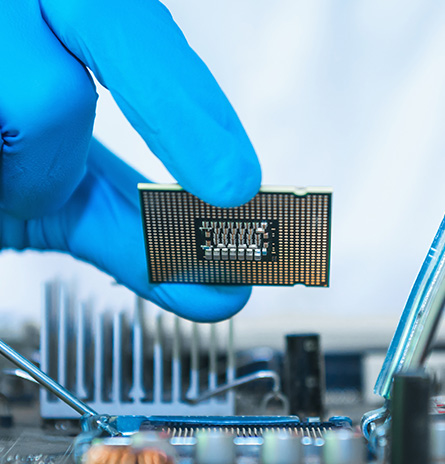USB Power Meter
Many visitors to this website will be fully aware of how expensive dedicated test and measurement devices are, and in addition to this often bulky and heavy. An alternative solution is to have USB sensors that plug into a PC port and run a specific application. This can be very convenient for mobile engineers as well as a cost optimised option for laboratories.
The USB power meter defined in this reference section utilises the USB 2.0 Hi-Speed FT232H device to act as a USB to I2C bridge to current and voltage sensing devices.
The reference material offers a simple schematic defining how to connect off the shelf modules to realise the voltage and current monitoring functions of the meter as well as offering full source code demonstrating how to configure the FT232H into MPSSE mode required to act as a USB to I2C bridge and display the output as text or a graph.
Further information is available in AN_355. Source code is available for download here

Win10 IoT Colour Meter
IoT means many things to many people. For FTDI, it is about the ability to read and control sensor data.
This reference design looks at how the new Win10 IoT Operating System can be loaded onto a small embedded processor (Raspberry Pi2) and then using specially built Win10 IoT FTDI drivers, control an FT4232H USB bridge device to access the system peripherals.
The FT4232H has 4 channels of which 2 are used in the demonstration. One channel creates an I2C bridge through the device MPSSE mode to read proximity data from an MikroE module and colour data of the object closest to the test jig from an Adafruit sensor module.
The second channel of the FT4232H is used as a SPI master (again via the MPSSE mode) to control an FT800 based display unit (VM800B). The FT800 is part of our EVE range of display controllers and in this demonstration the display outputs proximity and colour data read from the I2C sensors attached to the first channel of the FT4232H.
Full connection diagrams and software source code are provided – allowing users to recreate the design or enhance the functionality by adding or replacing the sensors and extending the display graphics.
For further information refer to AN_475.
Project source code may be downloaded here.
Key elements of this reference design are:
I2C colour sensor from Adafruit

Raspberry Pi
Raspberry Pi is a small ARM based single board computer running Linux.
This reference design demonstrates how the Rapsberry Pi can be integrated with the RPi_HUB Module and an external analog to digital converter (ADC).
The RPi_HUB module utilises the FT2232H device which will be used in MPSSE mode to create an SPI master interface to read the external ADC.
Application note AN_221_Adding_An_ADC_to_a_Raspberry_Pi explains how to install FTDI D2xx drivers on the Rapsberry Pi platform and then wire up an ADC to the RPi_HUB module.
The schematic may be downloaded here RPI_ADC_schematic.zip
Full application source code to read and display the data from the ADC is available here ADC_source.zip

FT230X GPS Dongle
GPS (Global Positioning System) is becoming ever more prevalent in mobile electronic devices. This project demonstrates how the FT230X can provide a simple interface between a USB enabled host device and a GPS module for reading standard positioning data (NMEA0183 v3.01).
An application note (AN_216) provides details of the design operation while full schematics and PCB gerber files are also available for download at the links below.
AN_216 Using the FT230X to Design a GPS Dongle
Schematic PCB layout
The PCB data is in Altium format and a free Altium Designer Viewer can be downloaded from the following location:
https://www.altium.com/products/downloads.



